Parma is a charming city, full of life. The second biggest city of Emilia Romagna has a lively and cheerful spirit.
Exploring Parma like a local you will find out that art and music have always played a key role here, so that the city earned the title of "city of music" due to its musical history: Giuseppe Verdi was born in Busseto, a stone's throw from Parma.
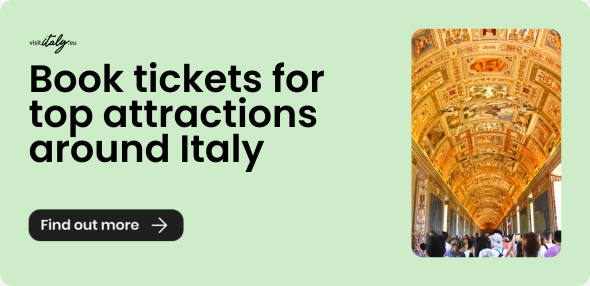
What to do in Parma like a local in 2026
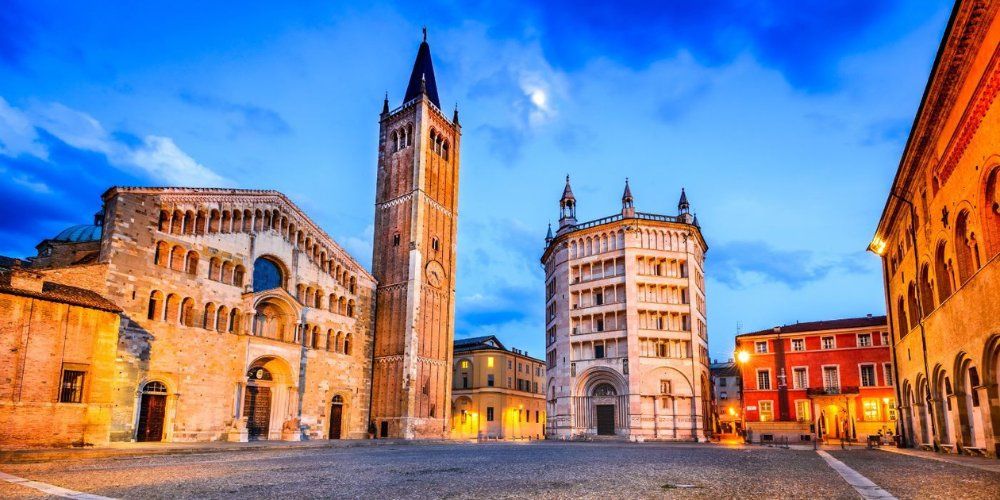
The central Duomo square - Parma
Parma was also the capital of a duchy that flourished during the Middle Ages. This prosperity has left an important trace that you can see on the streets of the historic center among theatres, churches, monasteries and chic villas.
For its varied gastronomy, Parma has also received the "UNESCO Creative City for Gastronomy" award: after all, we are in the land of raw ham and Parmesan, two cornerstones of Italian cuisine.
The following is therefore a list with our suggestions to make you experience the city like a genuine Parmesan, to discover those little gems that make a visit special.
Here are the 10 things to do in Parma like a local in 2026 to experience the city: enjoy our article, whether it's to find out how to attend the opera at the Teatro Regio, to choose the best traditional dishes or to listen to the curious talking statues.
10. Eat local food

A delicious plate of cured meat from Parma.
Parma is famous for being the land of ham, parmesan and lambrusco.
Emilia-Romagna’s food is always excellent, but this corner of the region is a paradise for lovers of cold cuts: in addition to Prosciutto di Parma, you must try the delicious culatello (originally from the town of Zibello), Felino salami, coppa, cooked pork-shoulder and Strolghino.
The best way to start a meal in Parma is to order a platter of tasty cold cuts and Parmigiano Reggiano, accompanied by torta fritta, golden strips of fried batter recalling the Modenese gnocco fritto.
To drink, of course, order a bottle of Lambrusco, the best-selling red wine in Italy! A not particularly sophisticated wine, but light and fragrant that perfectly accompanies the traditional dishes of Parma.
Among the unmissable first courses we recommend to try filled fresh pasta, such as cappelletti and anolini in broth, or pumpkin tortelli. Among the other top-notch first courses we find risotto and tagliolini, spectacular when seasoned with strips of culatello or raw ham.
The local second courses are decidedly rich in flavour, especially the beef stew (marinated for hours with the vegetables in wine) and the boiled meats which are served on a special trolley, in which you will find very tender cuts of chicken or beef, with to the ribs.
Finally, if you love tripe, in Parma you will also find the excellent Parmigiana tripe, finished with a generous grating of Parmigiano Reggiano.
Among the oldest trattorias in Parma, we recommend the Trattoria Salumeria Sorelle Picchi and the Trattoria Corrieri, where the traditional recipes are respected to the very fine details.
9. Visit churches and monasteries
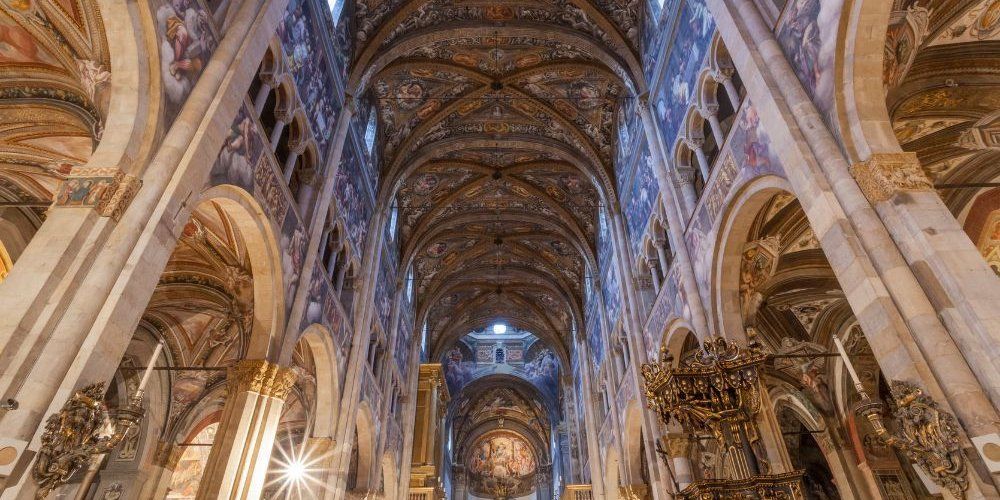
The wonderful ceiling of the Parma Cathedral.
Parma has a deep religiois and artistic vocation. and while waking around the city you will surely come across religious buildings.
If you love religious art and architecture, you'll surely find something for your taste between the Cathedral, the Basilica, the churches and monasteries scattered in the city centre.
Start from the Duomo, standing in the main square next to the Baptistery. This cathedral is Parma's most famous place of worship, consecrated in 1106 and built in Romanesque and Renaissance styles. Do not miss its wonderful frescoed ceilings painted by Correggio. After the Cathedral, also visit the Baptistery to appreciate its octagonal plan and the pink marbles of Verona.
The Basilica of Santa Maria della Steccata is a small Renaissance b Baroque masterpiece. Here you can appreciate the beautiful frescoes of the Parma school, including those by Parmigianino.
Finally, there are two Benedictine monasteries deserving a mention: San Giovanni Evangelista (in the heart of the historic center of Parma) and San Paolo (where you can see the splendid Chamber of the Abbess frescoed by Correggio and dedicated to Giovanna da Piacenza).
8. Get lost in the bamboo maze
What if a talented editor gets influenced by Argentina's greatest writer?
Simple, he creates the Labirinto della Masone, the largest bamboo labyrinth in the world.
This beautiful maze was built by the publisher Franco Maria Ricci, who has always been passionate about labyrinths, inspired by the readings of the Argentine writer Borges.
But the Labirinto della Masone is much more than a place to play at "getting lost", as it acts as a cultural center housing Ricci's art collection.
The bamboo maze covers an area of 7 hectares and is shaped like an eight-pointed star. 200,000 bamboo plants give shape to a labyrinth in which to test your sense of direction, hiding the building housing Ricci's publishing house, a restaurant and a museum.
The museum brings together his art collection, with about 600 pieces on display - among them canvases of Hayez and Ligabue, the mannerists (such as Carracci and Cambiaso), the sculptures of Canova and Bernini and local artists of the Duchy of Parma.
The Labirinto del Masone is a truly original place, perfect for a day trip from Parma - it makes fun and art coincide. Here you can spend a few hours in the countryside away from the chaos of the city.
You can book the entry ticket online, choosing the time slot, or go on site and buy the ticket at the last minute (the cost is around 20 euros, with family discounts). Allow about 2 hours to find your way out of the labyrinth and appreciate the museum or any temporary exhibitions. The maze is located in the Fontanellato area, 20 km west of Parma, and can be reached by car, or by bus (6, 9 or 12 to Sanguinaro).
Visit the Labyrinth of the Masone7. Parma like a local: visit local museums
To get to know Parma like a local, you absolutely must visit some of its many museums.
We recommend visiting at least one museum for each area of interest: the Galleria Nazionale for medieval and modern art, the Antica Spezieria di San Giovanni for science, and the Casa della Musica e dell'Opera for music.
The Galleria Nazionale is perhaps Parma's main museum, housed in the central Palazzo della Pilotta (where you can enjoy the park in front of the building to relax with the locals).
The gallery's airy 19th-century halls display works by Leonardo da Vinci, Correggio, Beato Angelico, Parmigianino, El Grieco, and many others. The exhibition ranges from religious art from the Middle Ages to the 20th century (including Bocchi and Guttuso). Tickets for the entire Pilotta complex cost €12, while considering that visiting the entire gallery requires at least an hour.
The Antica Spezieria is a former historic pharmacy located inside the Abbey of San Giovanni. The old pharmacy was run by the abbey's friars, but today it's a museum displaying ancient collections of vases, mortars, and delicate glass objects related to the apothecary and pharmaceutical industry. From a still to a herbalist's book, this small museum offers a curious and interesting journey through time that we recommend for those who love science and historic workshops.
Finally, if you love music, we recommend the Casa della Musica, housed inside Palazzo Cusani (free admission). This center preserves and promotes Parma's musical and theatrical traditions through original objects, photographs, and posters.
But there's more, let's add a bonus! If prosciutto crudo is your raison d'être, visit the small but very original Langhirano Prosciutto Museum. Here you can discover everything you need to know about Parma Ham, the king of cured meats, and enjoy a tasting tour of traditional products.
6. Chat with a statue
In Parma, you can listen to ancient statues speaking.
That's true! The "Talking Teens" project brings greater depth at local art, making tourists interact with the statues scattered throughout the city centre. The project is original and represents quite well local culture, as the author of the project are mostly young people from Parma's schools - helped by a local cultural association.
It's easy to get the statue to speak.
Just read the instructions on the totem near the statue and use your mobile phone to scan the relevant QR code. Shortly after, your phone will ring and the voice of the character represented by the statue will explain its secrets and history.
Among the 16 statues present in the circuit we find those of Giuseppe Verdi, La Vittoria, Parmigianino and many others. The voices bringing life to the sculptures are those of great Italian actors, such as Franco Nero (for Arturo Toscanini), Marco Baliani (Giuseppe Garibaldi), Laura Cleri (La Vittoria) and Adriano Engelbrecht (il Correggio).
Phone calls can also be listened to in English or even Parmesan dialect, for a truly local experience which does not exclude the visually impaired thanks to a plate in Braille.
To listen to all the statues, the path to be covered on foot is just under 5 km, about 3 hours on foot, but you can also do the tour by bicycle like a true Parmesan.
5. Explore the medieval castles
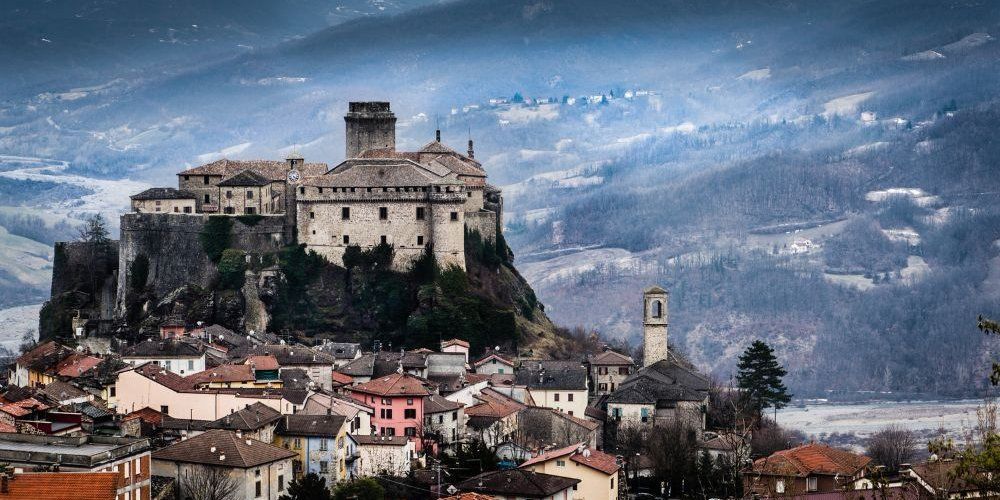
A dramatic view of the Bardi fortress.
In Parma you can experience the Middle Ages firsthand.
Emilia-Romagna's castles are stunning and there is no better way to look at Parma's past than to explore the castles of the duchies of Parma, Piacenza and Pontremoli. This circuit of fortresses, castles and manors offers a glimpse of the ancient life of these lands: visiting these castles is an ideal activity for families and children, halfway between history and fairy tale.
Among legends, ghosts, ancient wall tapestries and local food, here are our favorite castles near Parma.
The Castello dei Bardi stands on a rocky outcrop at the confluence of the Noveglia stream with the Ceno river: it was once a key stop along the Via Francigena (which connected Canterbury to Rome).
This is perhaps the most fascinating castle in the province of Parma, a great example of military architecture hiding a mystery: it is said to be haunted by the ghosts of the knight of Moroello and his beauty, Soleste. There was even a media case when journalists said they had photographed the ghost of the knight.
In addition to the walkways along the walls - offering stunning views of the valley - the Castello dei Bardi boasts museums and galleries, covering from the archaeological findings to the local fauna. Near the castle there is a restaurant serving traditional Parmesan cuisine. You can also visit the castle at night!
We also recommend to explore the fairy-tale atmosphere of the Castello di Felino, hidden in a forest, with its ancient ramparts and ditches. You can only visit the external walls, the courtyard and part of the basement, but it's definitely worth a visit. Inside you can taste great local food at the Locanda della Moiana. The castle is 1 hour by bus (line #6) from the center of Parma, or just 30 minutes by car.
Another castle worth a visit is the Castello di Torrechiara, not far from Parma, a beautiful expression of Renaissance architecture in the heart of the raw ham valley (so why not also book a gastronomic tour?).
It is important to remember that many castles and manors are still the living place of the old nobility from Parma, so you should check beforehand visiting times and opening days.
4. Spend a night with opera lovers
Parma is considered the city of music and opera.
Spending an evening at the theatre in Parma means sitting in the hall together with true opera lovers.
It's true, locals adore theatre, drama and opera, to such an extent that they are regarded as one of the most demanding and knowledgable audiences in the world (even Bellini was booed at the premiere of his Zaria in 1829).
The Teatro Regio is Parma's opera house and is one of the most important in Italy for its tradition.
You can visit the Teatro Regio with a guide who tells you about its history and curiosities. The opera season is generally between January and April, with events in October coinciding with the interesting Verdi Festival, not to be missed if you're a fan of his work. In addition to the opera, here you can also enjoy ballet, concerts of classical music and contemporary music artists. You can buy tickets at the ticket office, jostling with enthusiast locals, or online, where you can find the program of events and the guided tour on the official website.
Parma offers two other noteworthy location, the Teatro Due, nationally famous, with performances of contemporary and classical Italian drama and the Niccolò Paganini Auditorium designed by Renzo Piano, using spaces and materials from an old sugar factory.
The Teatro Farnese, on the other hand, is an example for its charm. Built in 1617 at the behest of the Duke of Parma and Piacenza, the theatre is located inside the Palazzo della Pilotta and enchanted the audience in the stalls with a mobile stage system and many ingenious tricks to flood the scene and move the characters in peculiar ways. It was used very little and fell into disuse until it was destroyed during the Second World War.
The Teatro Farnese was rebuilt in 1960 and in recent years it has been used as a hall for concerts and theatrical events. We recommend to visit it to appreciate the architecture while you explore the wider Pilotta complex and the National Gallery.
3. Take a walk to the Ghiaia market
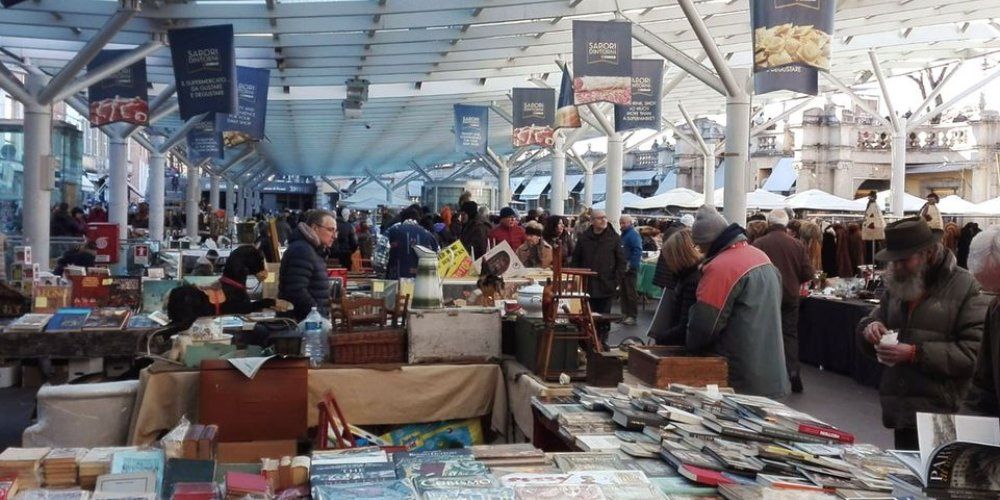
The Ghiaia market in Parma - Photo credit: Mercato della Ghiaia - Facebook page
The Ghiaia market, which takes place weekly in the square of the same name in Parma's historic centre, is a fixture for Parmesans.
Piazza Ghiaia began to be used for the city market in the 13th century.
Originally in 1509, the public slaughterhouse was built in the square, which grew over the years. In 1838, a new building was constructed. It included an arcade overlooked by several butcher shops and an icehouse.
Soon, the fruit and vegetable market was also moved to central Ghiaia Square until the weekly city market began to take place here in 1851.
Today, Ghiaia market also extends to the streets adjacent to the square and is still a favorite and regular destination for Parmesans who come here not only to buy but also to stroll or chat.
Among the historic and new stalls, you can find anything and everything here: household items, kitchen tools, clothes, flowers and many vintage and antique items. A trip to Piazza Ghiaia is a chance to shop at a reasonable price in a lively and colourful place!
2. Day trips between enchanting villages and art cities

Fontanellato - Photo credit: Di Raffaele pagani - Opera propria, CC BY-SA 4.0
There are several options for a day trip around Parma. Just a few kilometres away, for example, there are a few villages with an evocative atmosphere.
Two of the most famous are Fontanellato and Busseto, villages that have received important awards for their tourist-environmental characteristics.
Fontanellato, with its beautiful Rocca surrounded by a large moat filled with water, will take you back to a medieval atmosphere. Here you can see the famous room of Diana and Actaeon, frescoed by Parmigianino, a masterpiece of Italian Mannerism.
Strolling through the village, one gets lost among narrow streets, small churches and even trattorias where it is nice to stop for a good lunch or dinner based on excellent traditional Parma dishes.
The village of Busseto is closely linked to the figure of composer Giuseppe Verdi, who lived most of his life here. In the central Piazza Verdi, we find the monument dedicated to the maestro, the 13th-century Rocca now home to the town hall, the Verdi theatre and Casa Barezzi, where the musician lived with his wife, Margherita Barezzi. The house can be visited. Inside of it, many objects and documents testify to Verdi's education and career.
Outside the village walls, we also find the Renaissance Villa Pallavicino, once the summer residence of the lords of Busseto and now home to the Giuseppe Verdi National Museum.
Just one hour from Parma there’s Bologna, one of the most well known Italian cities. Although it would deserve a longer visit, a day trip to this city so rich in art and history is still a good opportunity to get to know its most important landmarks. One above all is the Asinelli Tower, almost one millennium old, with a high symbolic value and 498 steps to take you to a stunning panoramic view over the rest of the city.
Find out how to visit the Asinelli Tower1. Spend a nice day in the Ducal Park
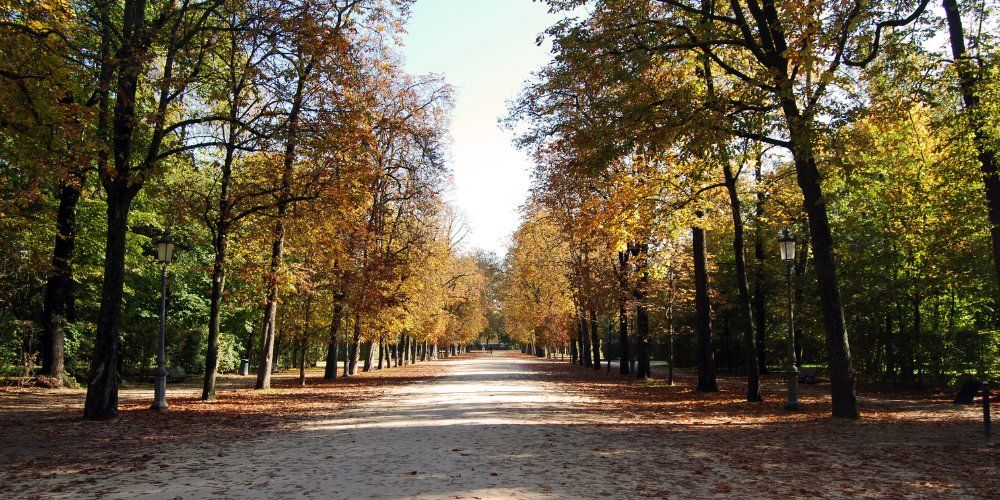
Parma: the Ducal Park - Photo credit: MaryG90 - Opera propria, CC BY-SA 3.0
Ducal Park, often called " the garden" by Parmesans, has been the city's green lung for centuries.
The park dates back to 1561, when Ottavio Farnese commissioned the construction of a new residence for his household. An Italian-style garden was built around the palace with a beautiful central avenue and fountains.
Over the years, the garden was enriched with new elements like the fishpond with the monumental Trianon fountain in the centre, in Baroque style.
The Bourbons in the 18th century embellished the garden with neoclassical statues typical of French gardens, and in 1861, with the arrival of Duchess Maria Luigia, the park was redesigned, and an orchard was included within it.
The Ducal Park is a charming and romantic place where Parmesans love to jog, stroll, ride bikes or relax with friends over a drink. It is an ideal place for a day out with the family, friends or an important date. In addition to this, in warm weather, this park becomes a beautiful setting for outdoor concerts and cultural events!
About the author
Written on 10/03/2023

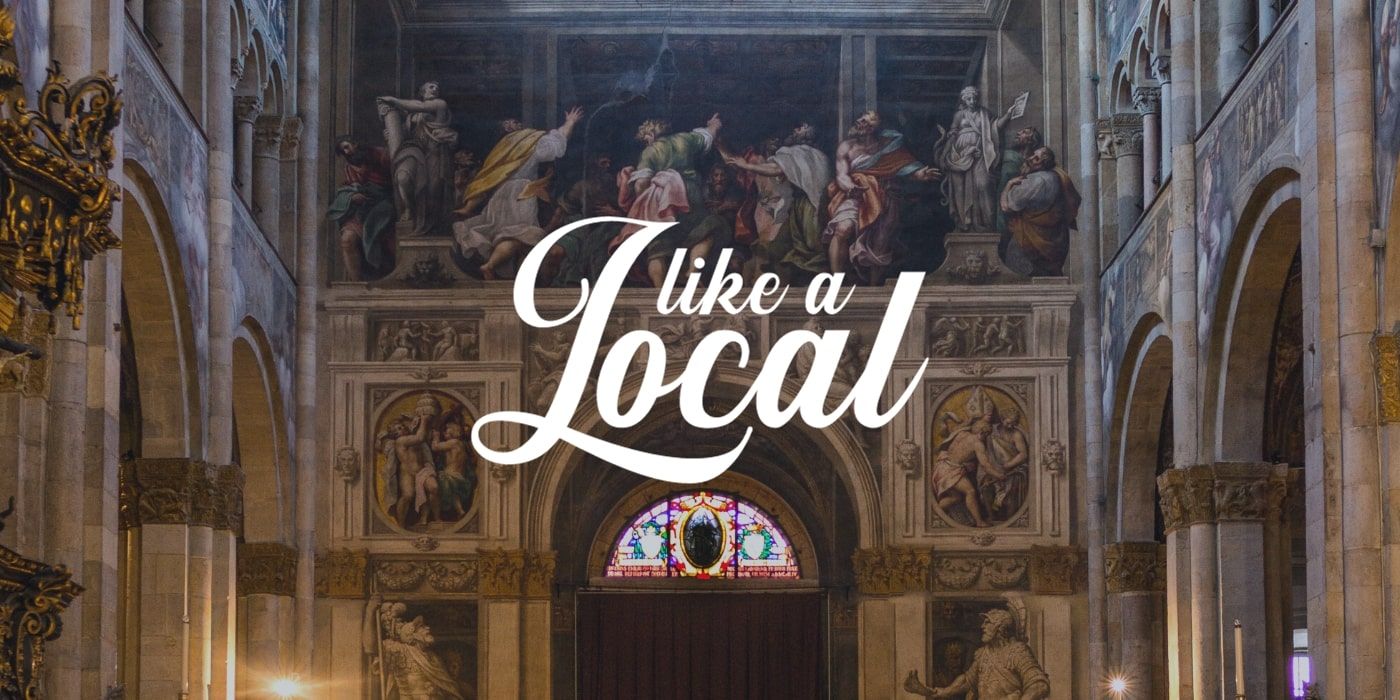


Fabrizio Mariani
Do you want to visit Parma like a local in 2026? Then check out 10 things to get the best out of the city